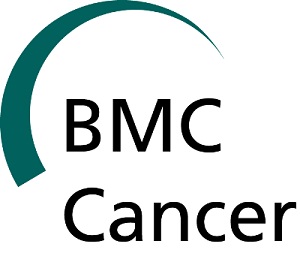
Almost two years ago, we announced the expansion of the BMC Cancer clinical oncology section to incorporate a new sub-section dedicated to surgical oncology and imaging. Two years down the line, the section has done so well that we have decided to make it two: the Medical and radiation oncology section edited by Dirk Vordermark, and the Surgical oncology, cancer imaging, and interventional therapeutics section edited by Stephen Povoski.
Below, the Section Editors share their views and plans for the new sections.
What benefits will the new sections bring to readers and authors?
Stephen Povoski (SP): Having a separate section entitled Surgical oncology, cancer imaging, and interventional therapeutics will allow readers and authors alike to immediately and more fully recognize that BMC Cancer is a journal interested in publishing high-quality clinical cancer research that specifically addresses important issues regarding cancer surgery, diagnostic imaging, interventional therapeutics, and surgical pathology.
This will allow BMC Cancer to compete at a higher-level and at a more even-playing-field with other journals which are classically considered as more “main-stream” within these communities.
Dirk Vordermark (DV): Medical oncology and radiation oncology are two major fields of clinical oncology. Frequently, treatment modalities are combined within modern interdisciplinary treatment concepts.
Both readers and authors with a focus on clinical topics will recognize this section as a suitable area for cutting-edge clinical research which should have direct impact on their clinical practice.
Any exciting future developments in your field?
 SP: Clinical investigations that specifically integrate the molecular basis of cancer into the diagnostic and therapeutic management approaches to cancer from the perspective of surgery, diagnostic imaging, interventional therapeutics, and surgical pathology.
SP: Clinical investigations that specifically integrate the molecular basis of cancer into the diagnostic and therapeutic management approaches to cancer from the perspective of surgery, diagnostic imaging, interventional therapeutics, and surgical pathology.
DV: Individualization of clinical cancer treatment is a major topic in the Medical and radiation oncology section. Molecular characterization of tumor material will increasingly guide treatment decisions, e. g. in lung cancer or breast cancer, and current research aims to define optimal treatment strategies for each well-defined subgroup.
What is your approach to editorial work, and the main challenges you face?
DV: As a Section Editor for the Medical and radiation oncology section, my goal is to support competent and fair review of clinical research submissions to BMC Cancer with the help of the Associate Editors.
As it is the policy of the journal to publish all sound science, a major task is to identify submissions with serious flaws early and provide guidance to authors to help them make their manuscripts eventually suitable for publication in BMC Cancer.
A major task is to maintain an adequate team of Associate Editors. Over the years, a core team of Associate Editors has developed. However, diversification of research topics has led to a requirement of different areas of expertise within each of the major tumor entities.
In addition, representation of all continents within the Associate Editor team should be improved, especially by incorporating to a greater extent editors from countries with high numbers of submissions, in particular Asian countries. Researchers from these areas with an interest in an Associate Editor position in my section are encouraged to get in touch with the journal’s Executive Editor.
By maintaining high-standards of quality control, I try to maximize the chance that any given manuscript submission will have the greatest likelihood to be able to move forward smoothly, quickly, and successfully through the formal peer-review process.
Stephen Povoski
SP: I believe that the function of a Section Editor is to be a multidimensional facilitator on behalf of the submitting authors, in order to provide authors with the best chance of success prior to the start of the formal peer-review process.
By maintaining high-standards of quality control, I try to maximize the chance that any given manuscript submission will have the greatest likelihood to be able to move forward smoothly, quickly, and successfully through the formal peer-review process as the manuscript submission is subsequently evaluated by an Associate Editor and by Reviewers and, ultimately, this will translate into a high-quality publication in BMC Cancer.
In order to best accomplish that, a Section Editor needs to develop a strong Editorial Board support staff. In that regard, since coming aboard as a Section Editor for BMC Cancer in December 2012, I have personally recruited over 140 new Associate Editors to the BMC Cancer Editorial Board, and I am always available to all of the participating Associate Editors on a 24/7 basis, by email and by cellular phone, for personal assistance with any issue related to the peer-review process for any manuscript submission.
This, in concert with the greater visibility of the Surgical oncology, cancer imaging, and interventional therapeutics section as a new free-standing section of BMC Cancer, will translate into the eventual publication of a greater number of and a greater variety of high-quality papers within BMC Cancer on topics specific to cancer surgery, diagnostic imaging, interventional therapeutics, and surgical pathology.
Comments